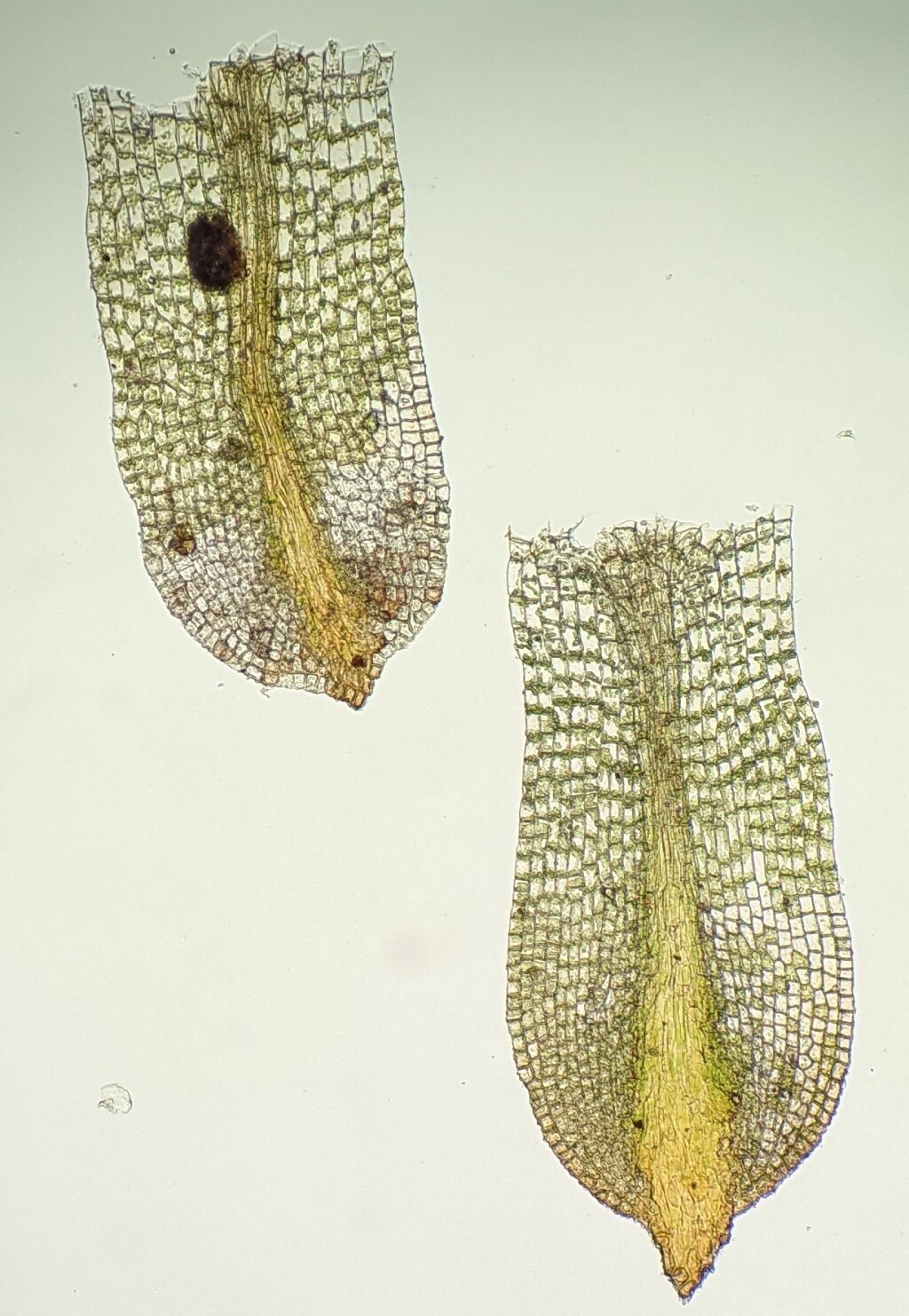Stonea oleaginosa
(I.G.Stone) R.H.ZanderProbably dioicous. Asexual reproduction by innermost leaves acting as deciduous propagules. Plants to c. 1 mm tall. Stems to 0.5 mm long, mostly simple, fleshy, pale, with a dense whitish flocculent mass of rhizoids at base, without central stand. Leaves spreading when moist, contracted and more incurved when dry, ovate, obovate, spathulate or suborbicular, 0.3–0.5 mm long, c. 0.3 mm wide, concave; apices obtuse or rounded, with or without apiculus, sometimes emarginate, with a spoon shape depression below apex; costa absent or weak and pale in smallest leaves or leaf bases, otherwise subpercurrent to percurrent; margins entire or slightly crenulate near base or toward apices, plane, without a border; laminal cells oil-filled, quadrate to shortly oblong, sometimes wider than long especially at margins, 10–20 μm wide, increasing in size toward base, pluripapillose in upper half, smooth in basal half. Sporophytes unknown.
MuM, VRiv, RobP, MuF. Central and north-west parts of the state beside watercourses or saline water or on roadsides and anthopogenic habitats. Also WA, SA and NSW.
 Spinning
Spinning

